Hyundai Sonata LX Review
You know what I love about the new Hyundai Sonata? Nothing. You know what I hate about it? Nothing. In other words, it's a hit. Out there in the real world– away from the elitist, over-educated automotive palate of a professional car reviewer– any vehicle that asks nothing whatsoever of its owner is guaranteed a place in the average American motorists' affections. If the automobile in question is cheap, reliable, comfortable and inoffensive, millions of people will buy it, love it and, eventually, buy another one. The new Hyundai Sonata is all that, and more. Not much more, but some…
Aesthetically, you've got to credit Hyundai for their tireless pursuit of total inoffensiveness. Rather than stick with any one of the company's four previous schnozzes, the Sonata's designers opted for yet another round of plastic surgery. This one's a winner; it's vaguely Japanese, completely unobjectionable and utterly forgettable. The Sonata's front end is proof positive that it's easier to copy a copy (i.e. the Honda Accord) than it is to knock-off an original. The same principle holds true for the rest of the Sonata's sheet metal; it's a riff on the Ford 500's riff on the Audi A6. For people who can't afford the real deal, or even recognize it when they see it, the Sonata is a perfectly judged pastiche.
The Sonata's interior wanders into the no-man's land between cheapskate and artistic minimalism. With its gray and beige color scheme, only the quality of the Sonata's cabin materials and sensible ergonomics prevent it from disappearing into a fug of rental car mediocrity. The Sonata's MP3-ready radio typifies the tension; the head unit is as dowdy as an Amish church, but you can't help but admire its honesty of form and simplicity of function. In short, the interior's too earnest for its own good.
The mood brightens the second you summon the Sonata's six-cylinder engine. The new 3.3-liter powerplant transforms the Sonata from a pace car for the Hubbard Glacier into a genuinely frisky four-door. In fact, there's enough oomph at full stomp to trigger a mild case of torque steer. More importantly for its target demographic– who probably think torque steer is something Texas cattlemen do after work– the engine's continuously variable valve timing assures smooth acceleration right up to redline. While only an Impala driver would mistake the Sonata LX for a high-performance sedan, even a 3-Series snob would appreciate the Korean's surfeit of seamless shove.
Seamless, yes; charismatic, no. Hyundai's relentless campaign to eliminate any reason not to buy the Sonata failed to encompass the powerplant's whiney tone and treble-intensive timbre. If the Koreans had strangled the mechanical din at birth, the Sonata would've been hailed as the ultimate bargain basement luxury car. Passengers sitting in its spacious back seats wearing noise cancellation headphones could still make that claim, but then they'd miss out on the Sonata's sonorous sound system. Pop in your favorite go-faster CD and you're loaded for bear.
No, really: the Sonata is a sharp-handling machine. Thanks to its accurate steering and thoroughly modern suspension– double wishbones up front, a multi-link at the back and coil springs over gas shocks all 'round– the four-door negotiates corners with admirable poise, reasonable tenacity and minimal body lean. Pump-up the volume and she'll stay as flat as yesterday's Diet Coke– until the inevitable understeer slide spoils your fun. You could switch off the handling Nanny and let loose the dogs of war, but then Koreans eat dogs and that's just too weird. Besides, anyone who wants to drift a Sonata shouldn't buy one in the first place.
The Sonata's harsh ride is the flip side of its commendable body control. [Note to Hyundai engineers: road feel isn't supposed to hurt.] I'm sure the Sonata's core clientele would've gladly sacrificed a bit of sporty spice for a better flavoring of crash suppression. That said, the Sonata's chassis feels incredibly solid– IS incredibly solid– until a series of bumps jars its occupants back to price-related reality. Taken as a whole, the sedan's dynamics conform to the theory that the economy car with the least objectionable road manners wins. Who can argue with that?
Nor can you argue with the Sonata's rise up the sales charts. If Hyundai tweaks the Sonata's suspension for comfort, adds another layer of sound-deadening (to cater to Americans' predilection for a "big car feel") and maintain its rep for reliability, the model will take a massive bite out of its deeply-entrenched Japanese competition. Even without these changes, the Sonata has everything it needs to be a total success amongst America's value-driven car buyers. The fact that car snobs wouldn't touch it with a ten-foot pole tells you everything you need to know about its prospects.
More by Robert Farago
Latest Car Reviews
Read moreLatest Product Reviews
Read moreRecent Comments
- Slavuta Motor Trend"Although the interior appears more upscale, sit in it a while and you notice the grainy plastics and conventional design. The doors sound tinny, the small strip of buttons in the center stack flexes, and the rear seats are on the firm side (but we dig the ability to recline). Most frustrating were the repeated Apple CarPlay glitches that seemed to slow down the apps running through it."
- Brandon I would vote for my 23 Escape ST-Line with the 2.0L turbo and a normal 8 speed transmission instead of CVT. 250 HP, I average 28 MPG and get much higher on trips and get a nice 13" sync4 touchscreen. It leaves these 2 in my dust literally
- JLGOLDEN When this and Hornet were revealed, I expected BOTH to quickly become best-sellers for their brands. They look great, and seem like interesting and fun alternatives in a crowded market. Alas, ambitious pricing is a bridge too far...
- Zerofoo Modifications are funny things. I like the smoked side marker look - however having seen too many cars with butchered wire harnesses, I don't buy cars with ANY modifications. Pro-tip - put the car back to stock before you try and sell it.
- JLGOLDEN I disagree with the author's comment on the current Murano's "annoying CVT". Murano's CVT does not fake shifts like some CVTs attempt, therefore does not cause shift shock or driveline harshness while fumbling between set ratios. Murano's CVT feels genuinely smooth and lets the (great-sounding V6) engine sing and zing along pleasantly.




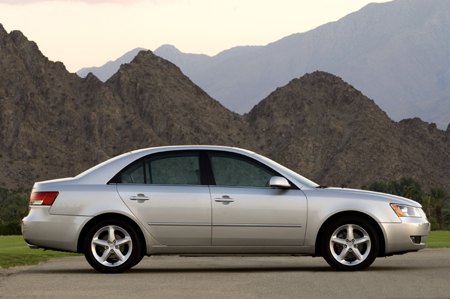

















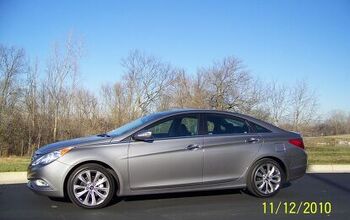
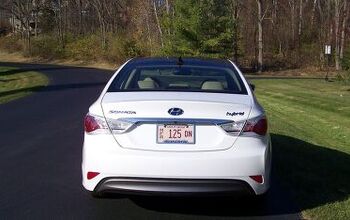
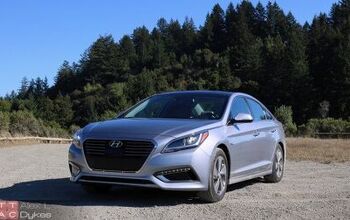

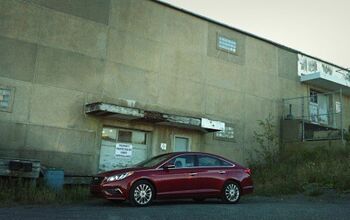










Comments
Join the conversation
I just rented one of these for 10 days, and even though my advance expectations were low, I was quite impressed with it. The V6 is very smooth and it accelerates briskly. The transmission up- and down-shifts when it is supposed to, unlike the ADHD-afflicted transmission in my RAV4 that shifts with every tiny twitch of my throttle foot. The interior is spacious, as is the trunk. It is attractive in an inoffensive way, much like the late-90's Camry. And I actually liked the taut ride. It is a good car for going fast and being invisible.
Your review was spot-on. I had to rent one of these "cars" recently and I couldn't wait to get rid of it. Hyundai's attempt not to be offensive in any way is exactly what offended me about this lumbering dinosaur. They actually found a way to make a V6 boring - by connecting it to an auto transmission that lagged whenever I wanted power. The interior was so disonnected and plain, I thought I was in purgatory. The clumsiness of the design was obvious. The neeedlessly huge body had me scared I was going to hit stuff, while the interior wasn't much roomier than my Mazda3. I could feel the energy being sucked out of me while I was driving it. No one could feel excited about this sad excuse for a car.